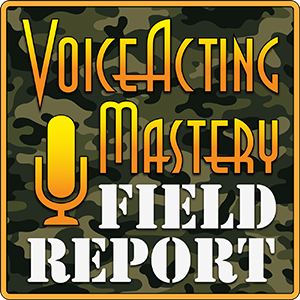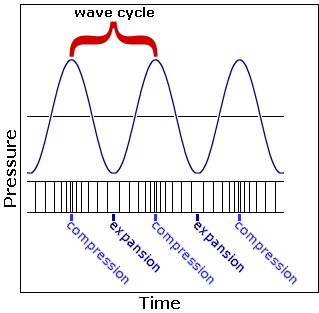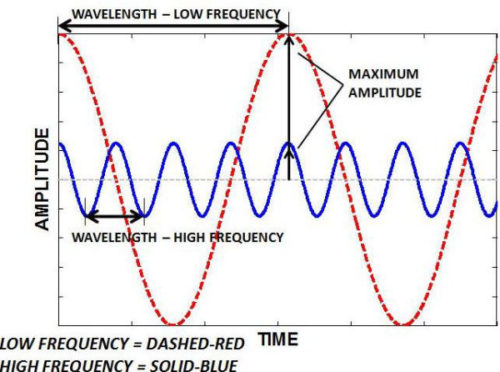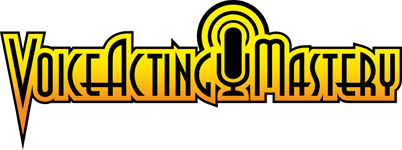VAM 124 | Interview with Richard Tatum, Part 2
Welcome to episode 124 of the Voice Acting Mastery podcast with yours truly, Crispin Freeman!
As always, you can listen to the podcast using the player above, or download the mp3 using the link at the bottom of this blog post. The podcast is also available via the iTunes Store online. Just follow this link to view the podcast in iTunes:
http://www.voiceactingmastery.com/podcast
This is the second part of my interview with my good friend Richard Tatum! Richard is not only an accomplished voice actor, and voice over teacher, but also an amazing producer of voice over demos. You may know him as Rex Goodman in Fallout 4, the voice of Theodore Roosevelt in Civilization VI and Omar Harmozi from the animated series Static Shock. I first came across Richard’s work as a demo producer when one of my students played me her demos and I was blown away by how well they represented her abilities as an actress. Not only was her character demo very compelling, but her commercial demo was impressive as well. When I asked her who had produced them, she introduced me to Richard and he and I have been friends ever since.
In our previous interview segment, we discussed the beginning of Richard’s acting journey and how his strong theatrical acting background helped him pursue a voice over career. Amazingly, Richard broke into voice acting not just once, but twice! The first time was around 1996 when he got his first agent and started booking voice over work in Los Angeles. Unfortunately, when the actor’s union strike against commercials in 1999 dragged on for 6 months, Richard found that he needed to pursue other employment opportunities outside of voice over. Years later, in 2011, he decided to approach voice acting again. This time around he had a more methodical approach as well as far more experience under his belt. I think it’s incredibly useful to hear what changed and what stayed the same between both time periods when it comes to trying to break into the voice acting world.
In this episode, we’ll talk about how Richard began producing demos for voice actors. Through some wonderful synchronicity, Richard was able to join forces with a colleague of his to start coaching voice actors as well as help develop their demos. Not only do we discuss what you should and should not put on your demo, Richard also explains the mindset you need to have in order to use that demo to market yourself effectively to agents and casting directors. I certainly learned a lot from this segment with Richard and I’m sure you will as well!
If you’d like to find out more about Richard’s classes and voice over demo services, please visit his website at:
AbsoluteVoiceOverLA.com
or contact him via e-mail at:
AbsoluteVOLA@gmail.com
Thanks for listening!
Download Voice Acting Mastery Episode #124 Here (MP3)
VAM 116 | The Computer Skills and Audio Knowledge You Need to Be a Voice Actor, Part 3
Welcome to episode 116 of the Voice Acting Mastery podcast with yours truly, Crispin Freeman!
As always, you can listen to the podcast using the player above, or download the mp3 using the link at the bottom of this blog post. The podcast is also available via the iTunes Store online. Just follow this link to view the podcast in iTunes:
http://www.voiceactingmastery.com/podcast
In the first episode of this three part series, I outlined the basic computer skills you need in order to be able to record professional quality audio in your home studio. In the second episode, I expanded on that subject and explained the actual process of digital recording using simple metaphors. After listening to those episodes you should have a much clearer understanding of how your computer works and how your microphone and audio interface process and record audio as digital information. If you haven’t listened to the the previous two episodes in this series yet, I highly recommend that you review them both before continuing. As I conclude my discussion of this topic, I’m going to be building on the information I shared with you in the last two episodes.
In this third and final part of the series I want to talk about how to use your home recording setup to its fullest potential. I’ll be revealing to you the settings that professionals use to maximize the quality of their recordings. I’ll explain the differences between different digital audio formats, and I’ll also be warning you about some of the most common mistakes voice actors make when recording at home so you can avoid them! As I’ve mentioned previously, it may be good for you to have a notebook nearby to write down the terms and ideas I’ll be discussing. After listening to this series of episodes, you should have a solid foundation for understanding the fundamentals behind professional quality digital audio recording.
If you have any thoughts, thank you’s or questions about this 3-episode series, please feel free to leave a comment on this blog post!
I’m also getting ready to do my next round of Q&A here on the podcast, so if you’d like a chance to have your question answered in a future episode, you can call the Voice Acting Mastery phone line at 323-696-2655. Please remember to state your first name and what city in the world you’re calling from before leaving your message. Thanks for listening, and I’ll see you in the next episode!
Download Voice Acting Mastery Episode #116 Here (MP3)
VAMFR 011 | Marketing and Self-Promotion for Voice Actors, Part 3

VAMFR 011 | Marketing and Self-Promotion for Voice Actors, Part 3
Welcome to episode 11 of the Voice Acting Mastery: Field Report podcast!
In this episode our correspondent, DanWill McCann, concludes his special report on how to market and promote yourself as a voice actor!
As was mentioned in parts 1 and 2 of this report, while attending a Los Angeles area convention called Wondercon, DanWill was able to ask several talented and successful voice actors about how they approach these topics. They were generous enough to share their insights, and DanWill found their methods and stories very valuable. In part 1 of this report, DanWill discussed business cards, websites, and the importance of both acting training and diligent participation in the industry. In part 2, he discussed social media, its rising impact on the voice over world, and some best practices for how to use it.
In part 3, DanWill would like to address the subject of agents and their role in getting your name out there, as well as what kinds of self-promotion and networking can be done at conventions like WonderCon. He’s also going to talk about demos, which are a major component of every successful voice actor’s marketing strategy.
Once again we’re lucky to hear from five impressive voice acting talents, including Dino Andrade, who recently announced he’ll be voicing the Scarecrow once again in Batman: Arkham Underworld, and Rikki Simons, who played the lovable Gir from Invader Zim. David Sobolov lends his voice to Draxx in Marvel’s animated series, Guardians of the Galaxy, and he was kind enough to speak with us as well. DanWill will also share advice from Sandy Fox, the voice of the Black Lady and Sailor Chibi Moon from Sailor Moon Crystal, and Lex Lang, an ADR expert on voice matching and creature noises whom you may have heard in recent movies like Jurrasic World and Deadpool. So here we go!
The VAM Field Report will be released on the 1st Wednesday of every month so stay on the look out for it!
Download VAM Field Report Episode #11 Here (MP3)
VAM 115 | The Computer Skills and Audio Knowledge You Need to Be a Voice Actor, Part 2
Welcome to episode 115 of the Voice Acting Mastery podcast with yours truly, Crispin Freeman!
As always, you can listen to the podcast using the player above, or download the mp3 using the link at the bottom of this blog post. The podcast is also available via the iTunes Store online. Just follow this link to view the podcast in iTunes:
http://www.voiceactingmastery.com/podcast
In the last episode, I outlined the basic computer skills you need in order to be able to record professional quality audio in your home studio. I spoke in depth about the structure of your computer and how it interfaces with any external audio devices you may be using such as a USB microphone or a USB audio interface. If you haven’t listened to the previous episode yet, I highly recommend that you review it before continuing. As I move forward, I’m going to be building on the information I shared with you last time.
In this episode I want to talk in depth about the process of recording audio on a professional level. Most beginning voice actors do not have a solid understanding of what it means to record professional level audio. With the proliferation of smart phones and other consumer level portable digital recording devices, we’ve all become very accustomed to recording both audio and video on the spur of the moment. We often watch videos and listen to audio that our friends and family post on social media websites. While these shared moments of audio and video may be spontaneous and candid, they almost never approach a level of quality that is acceptable for professional audio environments. Just imagine if the sound in the next big movie or TV show you decided to watch was recorded on your cell phone. It would be difficult for you to listen to it for long without being frustrated by the low quality of the audio. It takes studio professionals countless hours of focused attention and hard work to achieve the crystal-clear dialogue, sound effects and music you hear in your favorite Hollywood films and television series. If your goal is to be a professional voice actor who regularly collaborates with these industry professionals, you need to know how to achieve a more rarified level of audio quality in your own recordings.
I’m going to explain to you the basics of digital recording and what it takes to record audio on a professional level from your home studio. While a complete course on how to record studio-grade audio is beyond the scope of this podcast, I do want to provide my listeners with straightforward metaphors for understanding the process. I also want to address some common mistakes and misconceptions beginners often stumble over when approaching digital recording. I’ll explain in detail what’s going on inside your audio equipment so you’ll be better prepared for the next episode, where I’ll share best practices and more mistakes to avoid when recording yourself. While some of this might seem complicated at first, I’m going to do my best to simplify things. I want you to have a solid understanding so you can spend more time focusing on your voice acting performances and less time stressing about technical issues, while still producing professional quality audio. As I mentioned in the last episode, it may be good for you to have a notebook nearby to write down some of the terms and ideas I’ll be discussing. Let’s get started!
As always, you can check out the Toolbox section of this website for my recording software and hardware recommendations.
In the beginning of this episode, I promised to include diagrams here on the website to help show how sound actually works. When you hear something, your ears are responding to sound waves that are moving through the air. These sound waves compress and stretch the molecules in the air around you, creating vibrations that your ear drums can detect. The faster the compression and stretching of air that occurs, the higher the perceived pitch of the sound. The slower, the lower the pitch. You can see that compression and stretching in the diagram below.

This compression rate is also called the frequency of the sound, since the pitch of a sound is determined by how frequently the sound waves strike your ear drum within a certain time period. The volume of a sound depends on the size of those waves, which is also called their amplitude. The higher the amplitude of a sound wave, the louder you perceive it to be and vice versa. So a quiet, high pitched sound has a low amplitude and a high frequency, while a loud, low pitched sound has a high amplitude and a low frequency. You can see this in the diagram below. The solid blue line is the quiet, high pitched sound wave and the dashed red line is the loud, low pitched sound.

Download Voice Acting Mastery Episode #115 Here (MP3)
VAM 114 | The Computer Skills and Audio Knowledge You Need to Be a Voice Actor, Part 1
Welcome to episode 114 of the Voice Acting Mastery podcast with yours truly, Crispin Freeman!
As always, you can listen to the podcast using the player above, or download the mp3 using the link at the bottom of this blog post. The podcast is also available via the iTunes Store online. Just follow this link to view the podcast in iTunes:
http://www.voiceactingmastery.com/podcast
In the next few episodes I want to discuss the technical skills you need in order to succeed as a voice actor. It wasn’t so long ago that voice actors did not need to concern themselves with the technical aspects of recording and manipulating audio. Up until the late 20th Century, most professional recording equipment was far too expensive for individuals to own. The majority of voice actors didn’t have their own home studios, nor were they expected to have the expertise to run sophisticated recording equipment, so most of that was handled by studio engineers. In the 21st Century, that’s all changed. With the advent of the internet, digital audio, and more inexpensive home recording equipment, every voice actor is now expected to be able to record themselves at home on a professional level and to be able to manipulate and distribute audio files online to casting directors and clients.
This means that if you want to be professionally competitive as a voice actor, you need to master some technical skills in two important areas: Computers and Audio Recording. I’m going to spend this episode outlining what you must know about Computers in order to thrive in the world of voice over. In the next episode, I’m going to discuss the ins and outs of Audio Recording and what mistakes to avoid when trying to record professional level audio.
I realize that some of you may be nervous about learning technical skills. You may find computers and professional recording equipment confusing or intimidating. Fortunately, it has never been easier to learn how to use this technology to help advance your career. In addition to this podcast, there are classes online, instructional videos on YouTube and entire online communities of people working to learn the same skills you are striving to master. So don’t despair! Instead, I encourage you to imagine the satisfaction you will get from mastering these technical skills and the confidence you’ll gain from knowing you can handle all the technical aspects necessary to further your voice acting career. Such knowledge is cumulative: once you learn the basics, it’ll get easier for you to understand any new developments in the worlds of computers and audio recording. So I hope you’re as excited to learn these skills as I am to share them with you!
As always, you can check out the Toolbox section of this website for my recording software and hardware recommendations.
I also reference some Macintosh utility software in the episode.
For bootable backups, I recommend SuperDuper.
For maintaining a health disk directory, I recommend Disk Warrior.
Download Voice Acting Mastery Episode #114 Here (MP3)
VAM 113 | Do You Need to Be a Vocal Chameleon to Succeed as a Voice Actor?
Welcome to episode 113 of the Voice Acting Mastery podcast with yours truly, Crispin Freeman!
As always, you can listen to the podcast using the player above, or download the mp3 using the link at the bottom of this blog post. The podcast is also available via the iTunes Store online. Just follow this link to view the podcast in iTunes:
http://www.voiceactingmastery.com/podcast
In this episode, I want to address a common misconception about voice acting, one that often causes a lot of anxiety and self-doubt in new and aspiring voice actors. There’s a widespread belief that in order to truly be successful as a voice actor, you need to be able to perform dozens if not hundreds of different voices. A common question I hear from first-timers is, “How do I learn to change my voice more?” or “How do I expand my range of characters?” Everyone seems to want to play a large number of radically different-sounding characters, and it’s seen as a particular badge of honor if “no one can recognize that it’s you” playing those characters. On one hand it’s easy to understand why it might seem really important to be this kind of vocal chameleon. After all, you hear about it a lot. Often the voice actors that get the most media acclaim are those who have the ability to change the sound of their voice so radically that it is hard to tell it’s the same person playing different characters. Mel Blanc is the most obvious example of this. Mel was the voice of almost every male character in the classic Looney Toons, including Bugs Bunny, Daffy Duck, Yosemite Sam and many others. In more recent years, actors like Frank Welker, Billy West and Jim Cummings are often heralded for their ability to be vocal chameleons and to differentiate the sound of their characters drastically.
When faced with such impressive examples of vocal transformation, many beginning voice actors believe that the most important skill they must develop is the ability to modify the sound of their voice. They feel that they must be the voice actor of a hundred or a thousand voices and they worry that if they can’t achieve that vocal flexibility, that they’ll never be professionally competitive in the industry. This can lead to them spending the majority of their time trying to find techniques to change the sound of their voice, rather than focusing on the highest priority in voice acting: the acting.
While being able to change the sound of your voice is certainly a useful and marketable skill, being a vocal chameleon is not nearly as important as being a capable actor. It is far more important to have the emotional flexibility to identify with a wide range of character psychologies than it is to be able to disguise your natural speaking voice. Ideally, a consummate voice actor strives for both and can not only portray the nuances of a character’s psychology, but can also adjust their vocal instrument to sound appropriate as the character. But too often I see aspiring voice actors put all their focus on trying to change the sound of their voice, and not nearly enough attention on their ability to act well.
Another damaging aspect of believing that one needs to be a vocal chameleon is it can lead you to discount the greatest asset you have in your voice acting arsenal: your own natural voice. I’m going to spend this episode debunking the myth that you need to be a vocal chameleon, if only to free you from the creeping fear that your own voice is not enough. I’m also going to give you a way to approach vocal flexibility that is based on the emotional believability of your acting, rather then trying to use technical tricks to change what you sound like. The fact is, any vocal transformation that is not rooted in the psychology of a character will not sound believable anyway, so the more you focus on the acting, the more believable your vocal transformations will be. Let’s get started.
Download Voice Acting Mastery Episode #113 Here (MP3)
